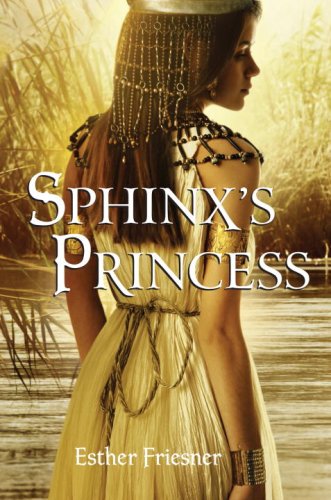Sphinx’s Princess
Aimed at a young adult audience, Friesner’s novel portrays Nefertiti as a dutiful, lively, and intelligent teenage girl, growing up in a commoner household in an Egypt on the brink of change. As a youngster, her cares are few, and her pleasures include music and dance and secretly learning from a scribe to read and write. When she is thirteen, her father, Ay, is summoned along with his family to Pharaoh’s court by his sister, the strong-willed and ambitious Queen Tiye. The queen, in her bid for power, decides Nefertiti should marry without delay Tiye’s son, the rather imperious Crown Prince Thutmose.
Upon Nefertiti’s and her father’s objections, Queen Tiye agrees to postpone the marriage for three years. During this time, Nefertiti discovers that Thutmose has his own agenda, which doesn’t necessarily include her. Virtually a prisoner in the palace and often lonely, Nefertiti finds companionship with his younger brother, Amenophis, a kind and loyal soul living in his brother’s shadow; their older sister, the talented Sitamun, and the young Habiru servant, Nava, who has oddly compelling religious beliefs concerning One God. Nefertiti inadvertently becomes involved in the tangled loyalties and alliances swirling around her, and even as she reluctantly comes to know and like Thutmose, she realizes there are those within the palace circle who plot against her.
Friesner creates an ancient Egypt that is lush and exotic, filled with beauty and sophistication, but which also harbors dangerous intrigues. I found this a suspenseful, well-paced and credible coming-of-age story about the young woman who will be forever immortalized in history as Nefertiti, “The Beautiful Woman Has Come.”










